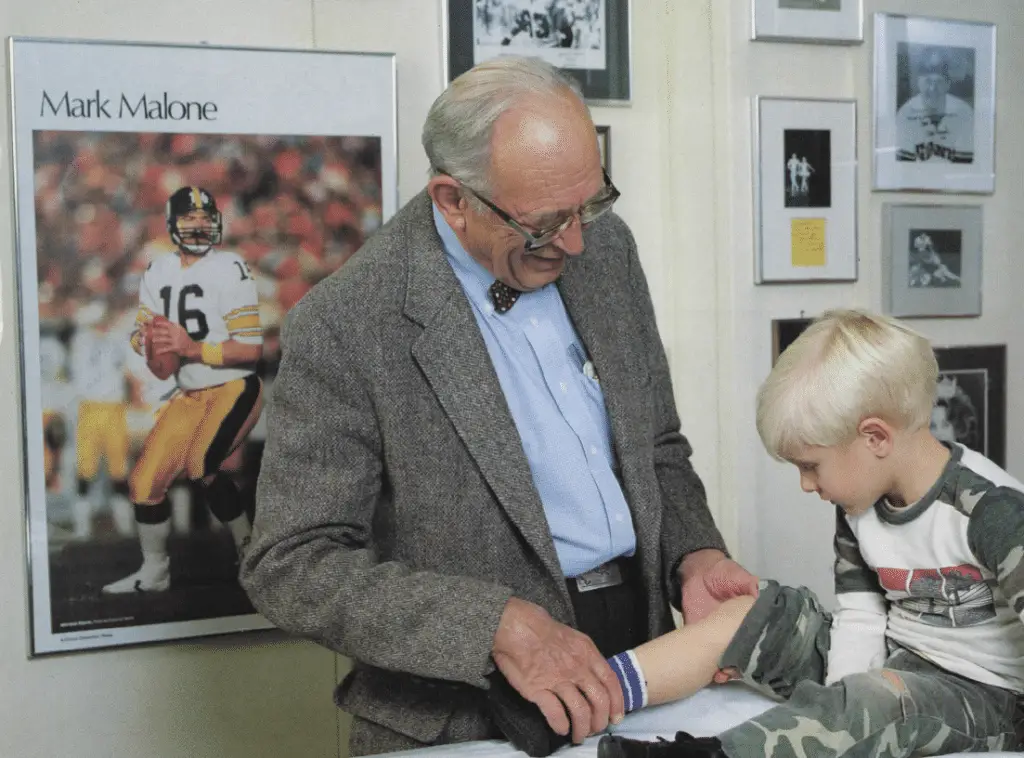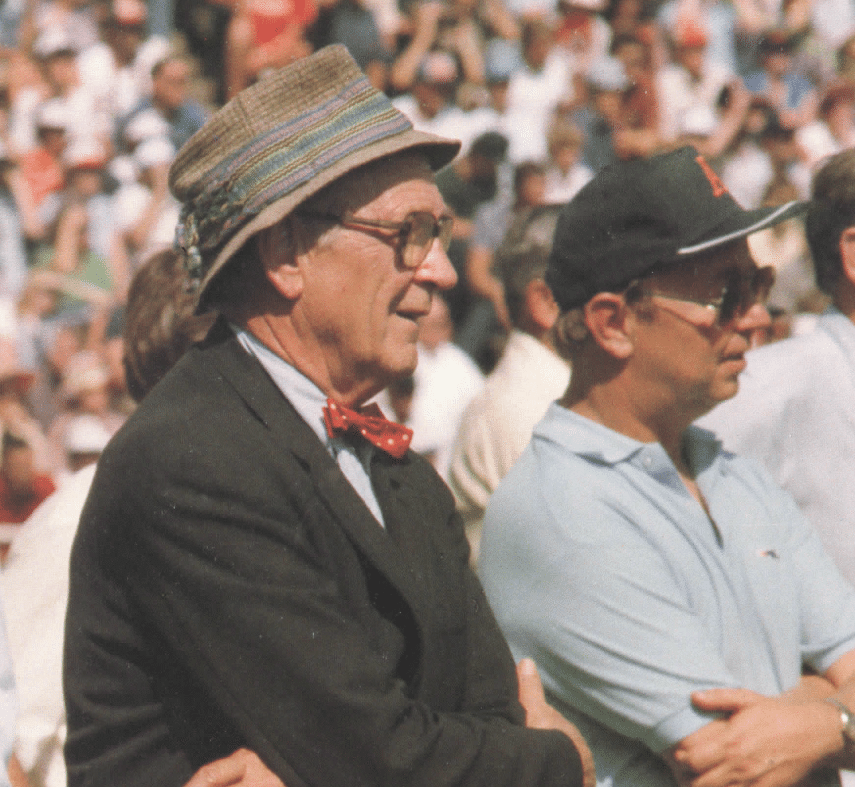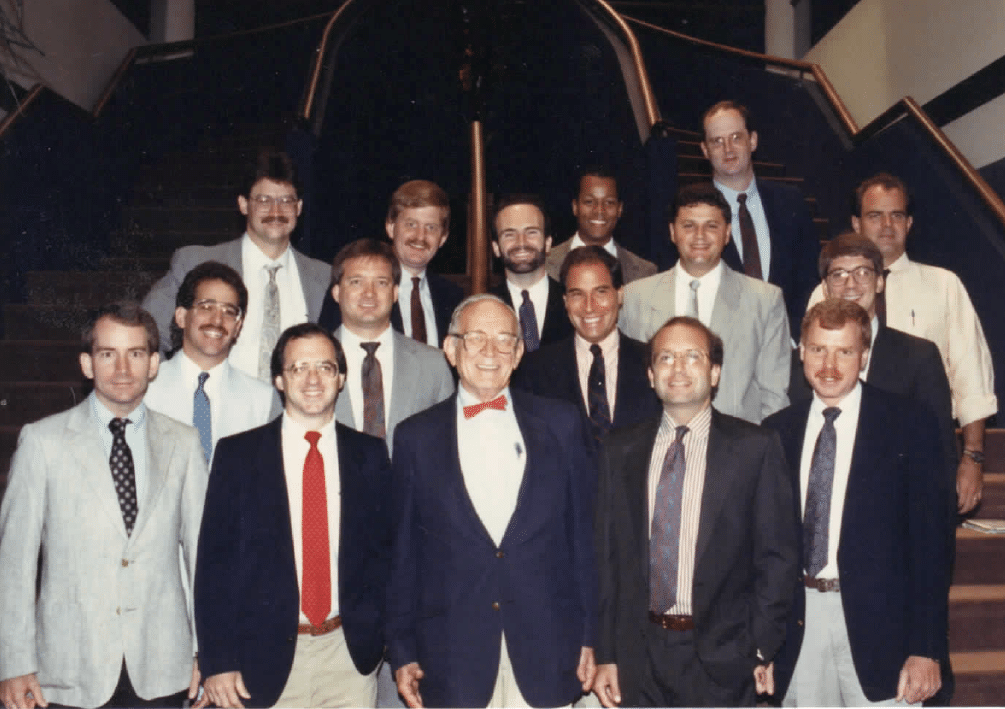Valuing People: the Art of Medicine and Life
Think of the people you like. What one thing do they all share? They are probably the ones that give you their time and attention. In short you probably like them because they VALUE you. And valuing others is the art of medicine and life.
Simply giving someone your time is the most effective way to say you value them. And, it’s not always easy to do – giving time to others – not in today’s world in which we are frequently interrupted, have so many distractions, and can easily bring work home with us.

I learned much about the art of medicine during my sports fellowship at the Hughston Orthopaedic Clinic. Actually I learned much about valuing others growing up, but received a daily first hand look at how powerful valuing patients can be during my sports medicine fellowship. Here are some the lessons I learned regarding the art of valuing others. These certainly are not the only ways to value others. But, these lessons can be applied daily in our encounters with others.
- Give people all the time they need and your undivided attention.
- Find something in common with those you meet (common experience, common interest, or common friend or acquaintance).
- Be kind and courteous to all.
- Treat others no less than your equal, yet always better than who they are or can become.
- Give people the very best of your skill and talents.
Today I will share one of my favorite medical stories (as I promised in this post) that incorporates most of these lessons in a single vignette. It occurred during my interview for my sports medicine fellowship at the Hughston Orthopaedic Clinic. I was meeting Dr. Jack Hughston for the first time and was seeing patients with him and his fellow.
It was when we saw the second patient of the day that I witnessed an old colorful orthopaedic surgeon use some country wisdom while spending more time than he needed, yet all the time required to reassure a patient and her family. To fully appreciate the story you need a picture of who Dr. Hughston was. So I will start there.
Jack Hughston, MD
Jack Hughston, MD was a prominent orthopedic surgeon in sports medicine (widely considered one of the fathers of sports medicine) though at the time of my interview I did not fully appreciate how prominent he was. In the brochure I received from the Hughston Orthopaedic Clinic was photograph of a distinguished Dr. Hughston in a traditional business suit and tie.
But, that’s not who he was. He was from the country. During the course of my fellowship year rarely did I see him in a traditional suit and tie. And he didn’t lead from the top down like many businessmen. He lead by example. During his prime years he was the hardest working physician at the Clinic and never expected anything from anybody that he had not already done himself.
No, the Jack Hughston I met that morning came limping down the hall way in blue polyester pants, blue and white checkered shirt with a red bow tie, well worn blue suit coat, and a hat that was a mix between a fishing hat and an casual fedora. He was holding an apple in his right hand – the same hand that was securing a lit cigarette between its index and long finger – the apple an apparent attempt to offset the harmful effects of the smoking. The way he carried both objects in his hand made it look like the apple was smoking the cigarette.

Dr. Hughston was a leading knee surgeon in the country but at the age of 73 was no longer operating. His limp was a result of a knee injury while serving in the war and if anyone ever needed knee surgery it was him, but he refused saying “no knee is that bad that surgery can’t make worse.” (Though later in life he finally gave in and had surgery.) How ironic for a knee surgeon to say such a thing.
As he walked down the Clinic’s main hallway the throngs of fellows, residents, and staff that routinely gathered in the hallway each morning suddenly halted their conversations and parted to the sides of the hall as Dr. Hughston made his way down the hall as if he were General Patton inspecting his troops. But, to me the scene looked more like Moses parting the Red Sea as bodies moved suddenly to walls on either side as if being pulled by a magnetic force as he walked down the center of the hall.
I said to myself, “ok, this gentleman is important” not because of anything he said but because of the way people responded to him. It was as if he were royalty. But, not a king being carried in a chariot, but rather just a common folk tending to his sheep as he walked down the hallway.
And, that is the another lesson in valuing people and connecting with them – being one of them.
He walked down the hallway being greeted with, “Good morning Dr. Hughston” and he greeted everybody back with a “hey there” or “how’s that research comin’?”
As we saw patients that morning it took him almost the entire morning for him to finish eating the apple and take a periodic drag on his cigarette with an occasional sip of sweet tea – in between patients of course. The sweet tea was the courtesy of Freddie Drake. Freddie was a female and one of the medical assistants who made the best sweet tea – not too sweet – but just right.
Dr. Hughston’s voice was somewhere between that of Bear Bryant, the famous football coach of Alabama and Sheriff Andy Taylor from the Andy Griffith show – a southern folksy drawl with a gravely/growling component from years of smoking. He had a tendency not to enunciate the last syllable of words, either.
He used a collection of colorful sayings, many his own, to make his points – no cursing – outside an occasional “hell”. Kurt Jacobsen, MD, one of Dr. Hughston’s former fellows who remained on staff at the Hughston Clinic compiled this list of Dr. Hughston’s sayings – A Guide to Southern Living. I think you will enjoy reading his Guide to Southern Living.
How to Value Someone

Now for the second patient of the morning. I don’t recall her name but will call her “Emily”. Emily was 13 years old and she and her parents drove five hours from Nashville to see Dr. Hughston. I will recount the story in my best southern country writing I can muster, but the story is incomplete without being able to hear Dr. Hughston’s voice.
Dr. Hughston grabbed Emily’s chart, took a quick glance, and entered the exam the room. He greeted them with a big, “HEY THERE. How y’all doing? I hear that son of yours got into medical schooooool. Vanderbilt? Ooooh wee! Congratulations! Tell him I said, ‘hey there.’ Thanks for comin’ and seein’ us. What brings y’all this far today? Somethin’ like five hours ain’t it?”
It turned out Dr. Hughston had treated Emily’s brother a few years earlier and it was clear he remembered the parents.
He than sat down leaning the chair against the wall so that only the back legs were on the ground. His hands were interlocked behind his head and he just listened to their story occasionally pursing his lips to exhale as is common in someone with emphysema. Mom did most of the talking.
She explained to Dr. Hughston that in the past four to six weeks Emily has been walking pigeon toe. Dr. Hughston shook his head and said, “Ooooh wee, that don’t sound right.” He then asked several questions directed to Emily though mom tended to speak for her.
Though best known as a knee surgeon, Dr. Hughston spent his early career working with kids and worked for the Shriners Hospital for Crippled Children in Greenville, South Carolina for two years. So Emily’s problem was something he had seen hundreds of time.
After asking all the necessary questions Dr. Hughston started to examine Emily. And, he examined her with the excitement and thoroughness of examining someone for the first time. He looked at her feet. He looked at her knees. He looked at her hips. He looked at her back. Not just once but two and three times. And, in between examining each body part he would stop and shake his head and let out a bit of a growl or grunt as if he were perplexed or mystified by the findings.
He then had Emily walk down the long hallway. Not just once, but five times. Once to get a general gestalt for her gait and four additional times focusing his attention on a different body part each time working his way up the kinetic chain – first the feet, then the knees, then the hips, and finally the pelvis. Sure enough each time down and back the hallway Emily was walking pigeon toe. And, again after each trip Emily made up and down the hallway Dr. Hughston would again shake his as if to say “what in tarnation is going on here?”
To this date I have not seen a patient more thoroughly examined by an orthopedic surgeon than I did watching Dr. Hughston examine Emily. The history taking and whole exam took 45 minutes and we had not even gotten to the radiographs (x-rays) nor had we formulated a treatment plan.
He ordered the radiographs. And when they were developed we viewed them outside the exam room in the x-ray section of the Clinic. Dr. Hughston looked at radiographs very carefully shaking his head as if he saw something terribly disturbing.
He then looked at me and then looked at the fellow and asked, “How do ya tell concerned parents… that there ain’t nothing wrong with their little girl – that their daughter has a psychological problem? In fact, I betcha she has a problem in schoooool. Let’s go find out.”
And, so we did.
He re-entered the exam room. Sat down on the same chair and leaned it against the same wall. He interlocked his hands behind his head and said, “Lemme ask y’all something. Is she having any problems or issues at schoooool?” Mom, said “Well, Dr, Hughston, Emily is interested in this one boy, but he won’t give her the time of day. And, she’s been sulkin’ and mopin’ around the house about it.”
Dr. Hugshton replied, “Well, that’s probably it. There is nothing physically wrong with Emily. There’s nothin’ catiwompass (out of alignment) with her exam. I suspect Emily is just going through a tough time at school – probably a boy thing as you say. Ooooh boy, school can be pretty tough on kids nowadays. Maybe there is someone at schooool she can talk to and hep (help) her.
Tell ya what, though. Y’all came a very long way to see me here today. Do you have a hallway in your home?”
“Yes, Dr. Hughston we have a hallway in our home” replied mom somewhat surprised by the question.
“Do you have any duct tape in the house?” asked Dr. Hughston.
“Yes, Dr. Hughston we have duct tape at home.” replied dad this time also surprised by the question. As this was unfolding I was thinking to myself where is he going with this?
Dr. Hughston then said, “Good. Here’s what I want ya to do. I want ya to run a strip of duct tape down the center of the hallway its entire length. When Emily walks down that hallway I want her to place each foot directly on the tape and walk down the hallway on the tape in a straight line. I promise y’all in two weeks she be better.” As he said this he more or less nodded and winked to the parents.
With all the sincerity in the world mom said, “Dr. Hughston we thank you so very much for your time. We do certainly wish you a good day.”
Dr. Hughston replied, “I reckon Emily is goin’ to be just fine. Be careful goin’ home. And, remember to tell that boy of yours I said ‘hey there.'”
Now I guarantee you Dr. Hughston knew the first time through the exam that Emily had nothing physically wrong. But he was going to be thorough. He wasn’t going to minimize the concerns of the parents or make Emily or the parents feel foolish. Having worked with children and teenagers at the Shriners he probably knew kids can be fragile so best be patient and understanding of them.
He knew they traveled five hours – one way – to see him and was going to make sure they got some value from the visit. He knew that even though there wasn’t a physical problem there was still a problem that needed attention. And, he offered a solution at least to address the physical manifestation of the problem.
He also knew that Emily was not the only patient that morning sitting in that exam room. Mom and dad were “patients”, too. He never made them feel like they wasted his time. And, he took all the time needed to answer all their questions.
Many doctors would have said after five or ten minutes, “Listen there is nothing physically wrong with your daughter.” And if asked what might be wrong would reply, “I don’t know but it’s not anything we can help with.” And, then leave the exam room leaving many unanswered questions.
Not Dr. Hughston. He made Emily the center of attention for an hour when all was said and done. And, though Emily barely spoke the entire encounter Dr. Hughston looked at her and spoke to her as well as her parents. Mom answered most of the questions, though.
In the end, he gave Emily and the family his very best. Dr. Hughtston gave this family more of his time than he needed, yet all the time they needed to alleviate their concerns.
It was because of his thoroughness and friendly caring attitude that he was able to convince the parents that there was nothing physically wrong easing their minds. Would they have been so convinced if he only spent a quick five or ten minutes with them? Probably not.
The other physicians at the Hughston Orthopaedic Clinic delivered much the same care and valued their patients no matter their background and regardless of whether they were a professional athlete or an injured worker.
All patients were valued. Patient education was paramout at the Clinic. In addition to the one on one teaching patients received from the staff, the Clinic was ahead of its time in producing patient education videos, newsletters, and other educational materials. All of that is why patients traveled far and wide to see physicians at the Hughston Orthopaedic Clinic (today the Hughston Clinic).
Most physicians at the Clinic did not wear a watch. Time really had no meaning when seeing patients. It was expected that you would take as much time as necessary with patients and the day ended when there were no longer any patients in the building – many times seven or eight o’clock at night.
Valuing others. It’s the art of medicine. It is the art of life!
Make others feel important or valued. Give them all the time and attention that they need even if it’s more time than you need to help them. When you do that you are saying, “you matter.” And, we all want to matter, don’t we?
——————————————————————————————-
What follows is a paragraph from a chapter Dr. Hughston wrote for the Clinics in Sports Medicine published April, 1989. It is an example of his colorful speech and with a nugget of wisdom contained within.
For 15 years (1955 to 1970) I was plowing “new ground” pretty much by myself. When you plow behind an old mule and hit a stump hole full of cottonmouth moccasins, you have to get on the move in a hurry and figure some solution to the predicament or you won’t get your corn planted.
Makes perfect sense, doesn’t it? And, who doesn’t want to get their corn planted?

